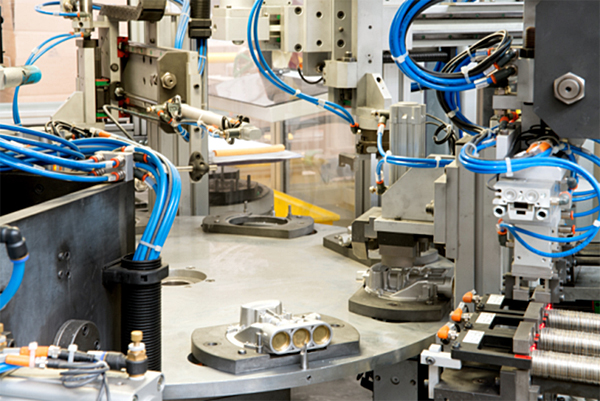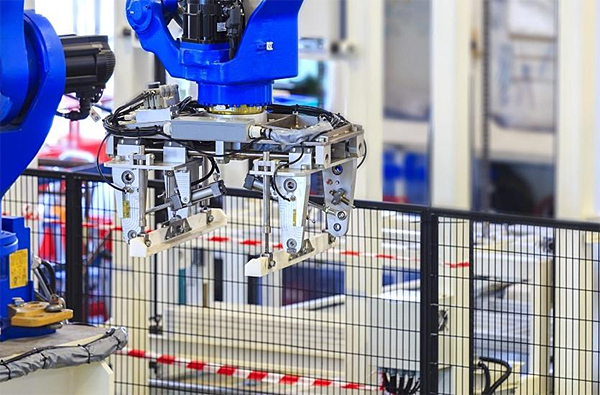
Safety PLCs (Programmable Logic Controllers) are used to build safety control systems that comply with international safety standards (such as ISO13849 and IEC61508).
In recent years, there has been a growing demand for PLCs to be networked, integrated with IoT, made more open, and to have enhanced security. Along with these developments, the "safety assurance" of workers in manufacturing sites has also become an extremely stringent international requirement. (This is called "functional safety”.)
In manufacturing sites (FA factories and various plant facilities), various machines operate in coordination through PLCs. For example, if a machine stops due to a power outage, it is very dangerous for that machine to automatically restart upon the restoration of power (power recovery). This is because workers who are near the machine to check the status may be exposed to danger.
Therefore, a "safe mechanism" is needed that prevents the machine from operating on its own after a power outage until a process for ensuring safety is carried out by an operator.
In this way, a PLC that is responsible for ensuring safety is called a Safety PLC, and it is currently in demand at FA sites around the world.
Safety PLCs have several features that ensure a safe mechanism. Two in particular are
Within the safety PLC itself, areas that handle safety information, such as RAM, are separated from areas that process non-safety information. This separation ensures that if a malfunction occurs in the area processing non-safety information, it does not affect the safety area.
Safety PLCs are used to ensure the safety of workers. It is unacceptable for them to permit the operation of machinery based on the assumption of safety when, in reality, an unsafe condition exists but cannot be detected due to a malfunction of the system itself.
Therefore, to address this, components such as the input and output sections are duplicated and made redundant. Additionally, a mechanism is in place that continuously self-diagnoses parts related to safety control, ensuring that the system will shut down in the event of a malfunction.

A safety PLC is equipped with special structures for safety control, but it does not function independently as a standalone unit. It is extremely important to have a meticulous design, informed by an in-depth understanding of the site, in FA factories and various plant facilities. This involves anticipating every possible hazardous scenario (risk assessment), developing safety measures to avoid these dangers (safety basic specification), and combining safety PLCs with general PLCs to fulfill the functional requirements of FA.
For instance, consider setting up fences around the processing area to avoid hazards from a machining robot. It is very important to ensure worker safety by making sure that the processing robot cannot operate unless the safety PLC side confirms that the door to the fence is closed.
However, false detection by a sensor installed on the door can lead to a serious accident if the safety PLC is informed that the door is closed when it is actually open. Therefore, it is necessary to design a system with multiple detection systems for door opening and closing to ensure safety.
We have several TUV-certified FSEs (Functional Safety Engineers) with expertise in functional safety, and thus we can construct a safety instrumented system (SIS) tailored to your situation.
We have extensive experience with safety PLCs from various manufacturers.
As you know, CE marking certification is required for production machinery and equipment exported to or manufactured within the EU. This means that, in the design and development of machinery and equipment using safety PLCs, it is essential to have a process that also keeps in mind the acquisition of CE marking certification.
We have a proven track record in the manufacture of many CE marking certified products and can provide a one-stop service from design and manufacturing to certification.
The CE marking associated with the products designed and manufactured by our company pertains to the 'Low Voltage Directive' and the 'EMC Directive'.
EU Directive (Low Voltage Directive:LVD 2014/35/EU)
EEMC Directive (Electromagnetic Compatibility Directive: EMCD)
Manufacture of CE Marking Certified Products
Since there are an overwhelming number of examples that cannot be posted on our website, our sales staff will be happy to provide you with specific examples.
Please feel free to consult with our experienced staff regarding the implementation and system integration of safety PLCs.